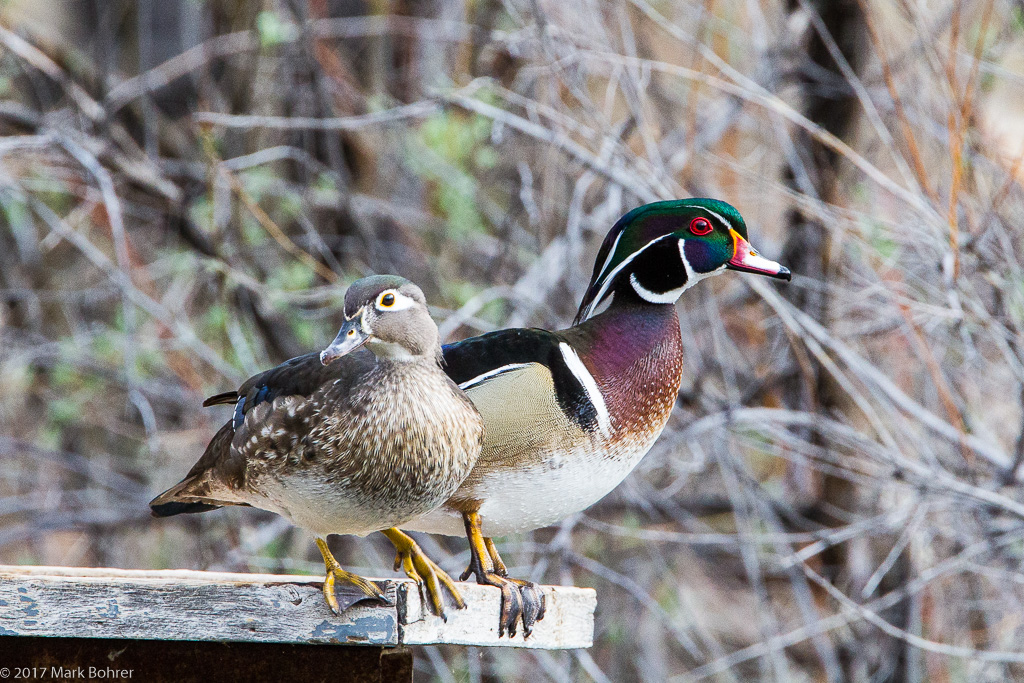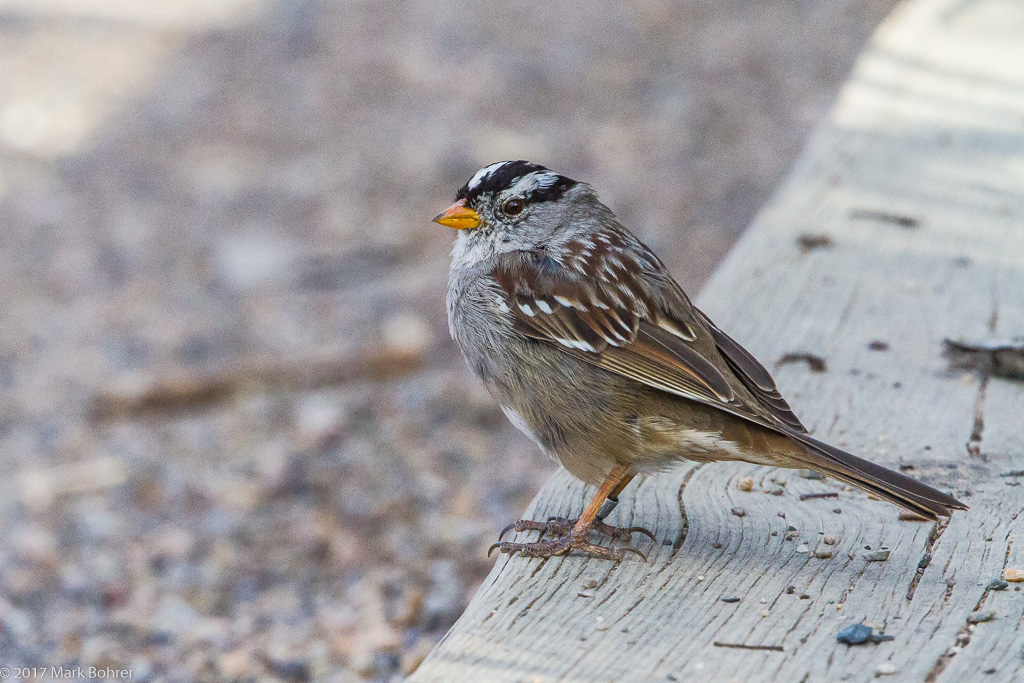|
Advantages to Early Mornings My wife’s early airport departure got me up and gave me an opportunity for some morning wildlife photography. In California that would have meant a trip to Palo Alto Baylands or Shoreline at Mountain View for waterbirds. Here in Albuquerque, I headed for the riparian corridor of Rio Grande Nature Center State Park. The species are similar in both places with one big exception – no gulls in this part of New Mexico.  Early morning at the Rio Grande Nature Center Blind Shooting Those Ducks There’s a concrete blind next to the nature center, empty at 7 am. It brings you close enough to almost fill the frame with 700mm on a crop-sensor camera – perfect for an intimate glimpse into birds’ lives.  She chose me – Wood duck pair at Rio Grande Nature Center, Albuquerque Wood ducks were extremely uncommon compared to Mallards in the San Francisco Bay Area. Here, wood ducks outnumbered them. So I went wood duck-crazy, watching several males follow a couple females around. One apparent couple flew up to the wood platform above the pond, and the male looked very happy he’d been chosen by the female. The clouds began to clear out around 9:00 am. The voice of early mentor Moose Peterson echoed in my ear: “Light’s getting hard, time to pack it up!” So I slid the camera-500mm lens into a backpack case, encased the second camera and 400mm, and collapsed the tripod. I could still wear all the gear and walk out, slowed down only a little.  White-crowned sparrow – still for a nanosecond The Ground Is Alive… As I moved past a clearing, it seemed like the ground was alive and moving. A closer look revealed a small flock of white-crowned sparrows looking for seeds in the grass. I dropped off the big tripod, heavy 500mm and second camera at the car. Then I returned with the 400mm f/4 DO IS on the EOS 7D. Most sparrows spooked away when I got close to their clearing. One guy kept right on foraging. He was smart though – he kept pieces of leaf litter between us. Suddenly, all the sparrows flew off into the bushes. A split second later, a Cooper’s hawk tore through the clearing, but he missed his meal. I stayed put. Gradually the sparrows returned, ignoring the clumsy human with the long lens. As they crossed the path to look for food on the other side, one stayed put long enough for a picture.  Bad hair day – greater roadrunner Back at the parking lot, I decided to check the Candelaria Wetlands blind. I was rewarded with a pair of roadrunners. After shooting their bad hair day, everyone left, roadrunners included. Shot Notes I used an EOS 7D mounted to an EF 1.4X II teleconverter and EF 500mm f/4L IS lens, plus an EOS 1D mk II mounted to a 400mm f/4 DO IS. I carried both in long lens cases from Kinesis Gear. I mounted the dSLR/extender/500mm on a Gitzo G1325 mk II carbon fiber tripod with Wimberley Sidekick slipped into an Arca-Swiss Monoball head. The Wimberley gimbal head is the most important part of the setup. It lets you move a heavy lens with a fingertip, making it easy to track moving wildlife. I use Arca-compatible lens and body plates from Really Right Stuff to quickly insert, adjust and remove my gear from a tripod. None of this stuff is cheap when you buy it brand new. You can save a lot if you buy used, with one caveat I’ll discuss in a minute. Older Gear Works Fine All of my gear is older. It all still works pretty well, so there’s no reason to replace it. Canon L-series lenses like the 500mm f/4L IS are the best they know how to make at the time of production. The 400mm f/4 DO IS is also an excellent optic, if you correct for its slightly lower contrast in Lightroom post-processing. There are mk II versions of both these lenses. I’ve not tried the later versions, but I suspect you might be hard pressed to tell the difference with the 500mm f/4L IS II without extreme magnification. The 400mm f/4 DO IS II is said to have higher contrast than the original. The EOS 7D lacks the autofocus sensor array of the newer cameras, but still yields good color quality with responsive AF. If you’re a pixel-peeper, images may look a little soft at higher magnifications unless you’re close and steady with a motionless subject. The EOS 1D mk II’s 8 megapixel sensor is obsolete by today’s standards, but if you get close enough to get it right in the camera without cropping, it gives good image quality. Used dSLR Limits dSLR shutters have a limited working life – you only get so many actuations before they break and need repair / replacement. If you’re looking at a used camera, only buy if you know the number of shutter actuations is low compared to the rated total. For most recent prosumer dSLRs, that will be at least 100,000 actuations. Pro-level cameras like the Canon 1D series give you 200,000 and up. You’ll find a list of shutter actuation limits here. |
(408) 483-3782
Curious about how to shoot ruins?(408) 483-3782

Recent Comments